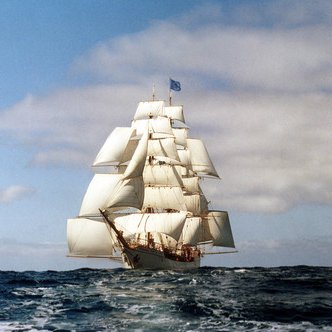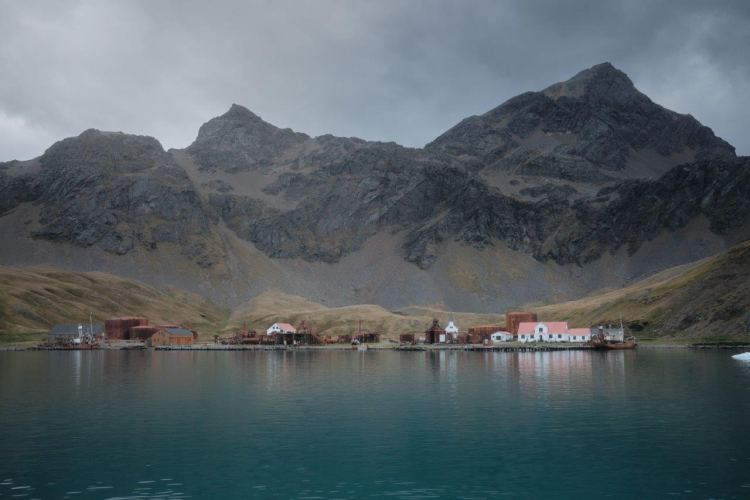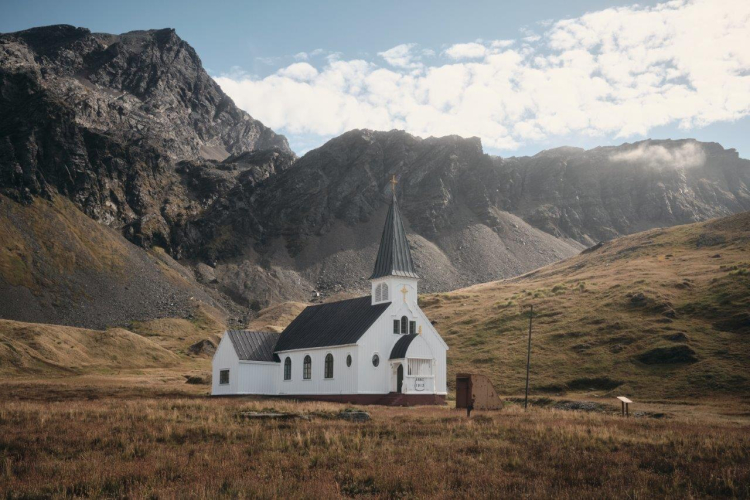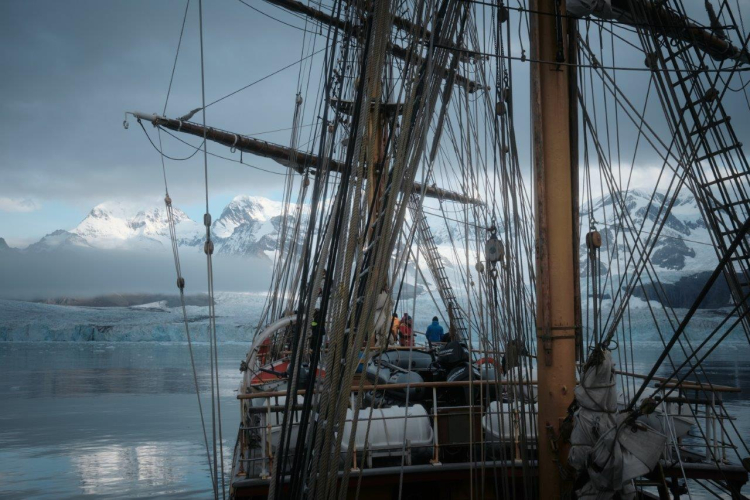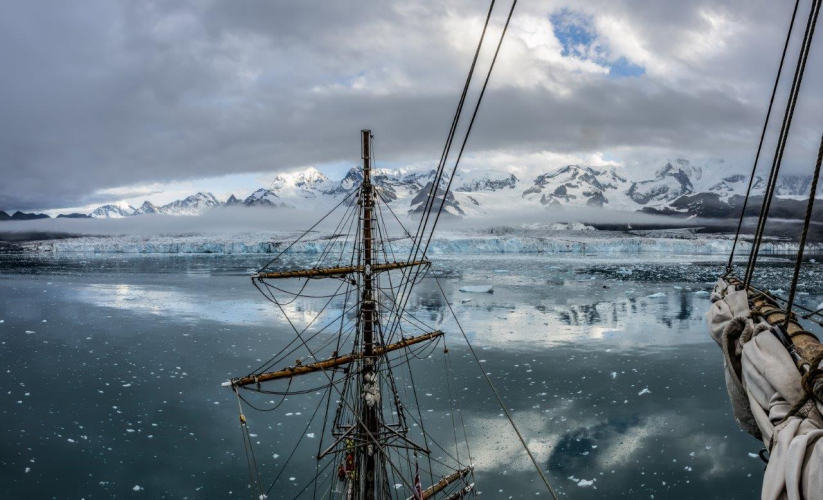Cumberland Bay East

Visit to Grytviken in the morning. Ship Cruise at Nordenskjold Glacier in the afternoon.
It is the beginning of the 19-hundreds. Otto Nordenskjöld and his party overwinter at Snowhill Island in the Weddell Sea in a functional though homey hut. In the meantime, the Captain that has brought them there, Carl Anton Larsen and the rest of the crew on board the Antarctic carry out hydrographic work in the area between Patagonia and South Georgia. It is here where they climb the mountains enclosing Cumberland Bay and find themselves overlooking a cove inside a larger bay. A great anchorage framed by high peaks. Down at its shores lay abandoned a sealer’s boat and seven try-pots. Those gave the name to such a beautiful bay, Grytviken in Norwegian. Two of these pots stand nowadays in front of the museum.
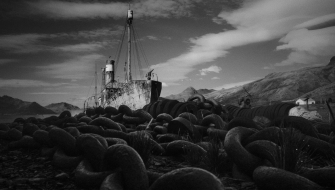
It is now the 16th of November 1904, after the corvette Uruguay rescued all the Swedish Expedition stranded parties in Antarctica, Larsen manage to raise funds from the Compañía Argentina de Pesca and build Grytviken Whaling Station. For the first season he brings three ships, Rolf, Louise and Fortuna and already in December of the same year the first whale was caught and processed. 194 more followed this hunt during the first operational year of the station. We will have to wait until 1964 for its total closure, when whales become so scarce that the business was no longer profitable. Together with Leith Harbour they didn’t even close during the Second World War
Already last night Europa’s anchor got a good hold in the bay. At her starboard the new buildings of King Edward Point, the scientific base and home for the island’s authorities as well. In front of her the rusty remains from the old whaling times, at her portside, the cemetery. First, sealer’s from the 19th century were buried here, then it became the graveyard for the whalers. Not just them lay here, also Felix Artuso, a navy sailor and the only Argentinean casualty during the 1982 Falklands conflict. But without doubt, the place is dominated by the granite headstone of Sir Ernest Shackleton tomb.
We leap now to the 5th of January 1922. Shackleton passes away in Grytviken while preparing his way south again in his fourth expedition voyage to Antarctica on board the Quest just the day after she arrived. His body was buried here 2 months later. At first it was on its way to England, but then his widow Emily requested to send him back for burial to where he belonged: in the deep south.
His head is oriented South towards Antarctica instead of the traditional East that all the other graves follow.
A few years ago, the ashes of his right hand man Frank Wild were brought next to him.
By tradition now, all visitors to South Georgia visit his grave to pay tribute to the memory of this remarkable man. And so we did. A shot of whiskey for us, one for “The Boss”, a few words, many pictures. And then is time to make our way through all buildings and remains of the station along the cove, now rusting away and half crumbled, in full working condition when Shackleton visited it in a couple of occasions during his expeditions.

At the opposite end of the bay, our visit ended in the area that nowadays is home for the Museum, well assorted shop and Post Office. All that is bought here is invested on Conservation projects in the island by the South Georgia Heritage Trust.
On our way, the hydroelectric power plant, like all whaling stations Grytviken have a good supply of fresh water, a damp up the hills and a couple of streams flow through the plain amongst the remains of the buildings, boilers and tanks. Other buildings were the residential area, Church, flensing plant, storage facilities and warehouse. About 300 men lived and worked here during the summer months during the good years of whale hunting. Along the shoreline, first we come across the deteriorated wooden hull of the Louise, the three masted ship first brought here by Larsen. A bit further, the whale catcher Petrel, built in Norway in 1928 and later converted for seal hunting. And just where we do the pickups to come back on board in front of the Museum, lay both the Dias and the Albatros.
A total of six shore whaling stations were operating in South Georgia between 1904 and 1964. They are one of the main features of the island and one of the most important episodes of its history.
The diversity of ecosystems, such as rocky exposed coasts, long beaches washed by big swells, tussock grass slopes and a vast alpine level is another of South Georgia essentials.
The incredible amount of wildlife is another of the island’s characteristics. But also are the very many glaciers that flow down to the sea from its glaciated interior.
Actually, the island was 56% ice-covered in the 70’s, an extension that has been substantially reduced in the recent times due to the glacier retreat.
The ice-free areas consist mainly of steep rock peaks, narrow ridges, scree, moraine, gravel, shingle and the steep to gentle slopes, mostly in the north, where vegetation occurs and where birds breed. Most of the coastline is shielded by cliffs. Although it may seem like the glaciers flow from different areas high up in the island, many of them are connected in their upper portions. Though not many reach the north coast, many do reach the southern one, as well as the inner ends of the northern bays. And there, one that offers a wonderful and impressive glacial scenery is the Nordenskjöld Glacier.
It debouches its large amount of ice on a calving front at the head of the wide Cumberland Bay East. Carrying such a name, our minds drift once more to Otto Nordenskjöld and his Swedish Antarctic Expedition at the very beginning of the 20th Century, when with the ship Antarctic they actually charted this area for the first time.
The sun in Grytviken started to hide behind thick clouds, light rain fell on our way to approach the glacier front. Then the clouds broke letting us appreciate the scale of the landscape. From high up in the alpine peaks the ice tumbles down in a wide open glacier front that here reach the sea. Overcast over our heads, some misty areas hanging over the mountains, a clear view of the ice, numerous bergy bits floating around, even a Leopard seal resting atop one of them. A beautiful setting.
Calm conditions made for many to climb the rig, learning and practicing on going further up than before and have a look from up there.
An afternoon spent on board, a few quiet hours sitting in front of the calving front of Nordenskjöld Glacier, all was followed by a couple of hours motoring to our next destination, Godthul where we plan another day full of new South Georgia experiences. But it wasn’t the easiest to get there. The glacier, active as it sure has been, has spread bergy bits and growlers all over. The wind picks up, the rain start to fall and it is dark. Eventually, with a good ice watch and a bit of time, Europa drops her 5 shackles of chain, hoping for a quiet night.
